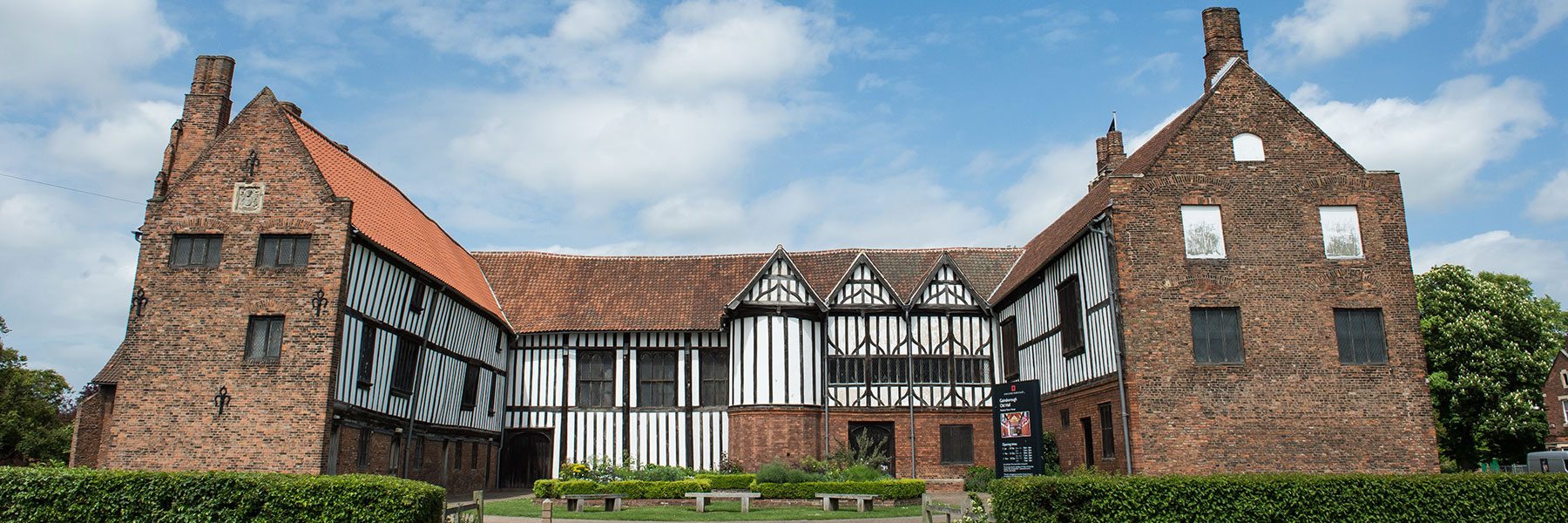
Seeking tolerance, spreading intolerance
Some of the early leaders of the Pilgrims/Separatists made important arguments in favour of religious tolerance at a time when this wasn’t a universally recognised right. By raising these issues, they began important conversations about what people should be allowed to do in their lives.
At this time, people were put in prison – and died – for their religious beliefs. The Gainsborough Separatist leader John Smyth began to argue for tolerance of all strands of Christianity whilst in exile in the Netherlands.
His ideas were developed by Thomas Helwys, who had escaped from Gainsborough to Holland as well. He argued that governments should not tell people what to believe and argued for tolerance for all faiths – not just Christianity. He sent his writings to King James I, who had him arrested and sent to Newgate prison.
“For our Lord the king is but an earthly king, and he has no authority as a king but in earthly causes … Men’s religion to God is between God and themselves … Let them be heretics, Turks [Muslims], Jews, or whatsoever, it appertains [matters] not to the earthly power to punish them in the least measure.”
Rules about church membership and leadership were very different in Holland where the Pilgrims escaped after fleeing Gainsborough. They found a home in Leiden where they were tolerated for their religious beliefs.
But toleration is a two-way process, and although they were free to run their own church, they found it hard living alongside people with different religious views, even other Protestant strands of Christianity – not to mention how they felt about Catholicism.
Beyond that, some of the ‘Reasons and Considerations’ the Pilgrims had for setting up a colony in America had profound implications – for them, their descendants, and for people who lived there already. They weren’t always tolerant themselves of Native Americans’ beliefs. They listed some of their reasons for migrating:
- “to further the knowledge and salvation of the sons of Adam in that New World”
- “we daily pray for the conversions of the heathens, … we ought … to endeavour to … convert them, … to us they cannot come, our land is full; to them we may go, their land is empty”
- “their land is spacious and void, and there are few and do but run over the grass, as do … the wild beasts. They are not industrious”
- “as it is a common land or unused … so we have it by a common consent”
The Pilgrims did establish a peace with the Native Americans living near them, but it didn’t last long after the first generation of Pilgrims. The history of colonial interaction with people already living in America is complex. The Pilgrims’ reasons for believing they were right to settle and take over what they saw as ‘empty’ lands helps explain their actions, but also shows how inequalities were created from the outset (in terms of property, land ownership and wealth for example).
This has led to a very different legacy associated with the Pilgrims, expressed most clearly by the United American Indians of New England’s establishment of a ‘National Day of Mourning’ on the same day as America’s national Thanksgiving holiday.
If you want to find out more about the Pilgrims’ writings and thoughts on tolerance, as well as understanding their own intolerances, you might like to read the original sources: Mourt’s Relation (1622) and Helwys’ Short Declaration of the Mystery of Iniquity (1611/12). You can also read about The Theology of John Smyth in Jason Lee’s 1999 thesis and about Helwys in Larry Kreitzer’s 2019 book. You can find out more about the Native American Wampanoag story by watching the “Our” Story: 400 Years of Wampanoag History playlist on YouTube and at Plymouth 400.
Next week: Secrecy – what was it like to try to live a secretive life in the early 17th century?




